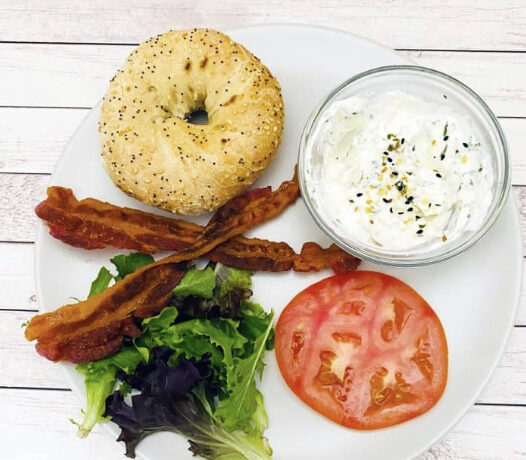Moving right along…I hope that you are finding some great information to help you determine which diet (if any) might be right for you and give you cause to further investigate AND talk to your healthcare provider about!!
The following information was gathered from Medial News Today.
The South Beach Diet is a commercial diet plan designed by cardiologist Dr Arthur Agatston and dietician Marie Almon in the mid-1990s. It became popular after 2003, with the launch of a best-selling book.
![[avocado]](https://cdn1.medicalnewstoday.com/content/images/articles/007/7501/avocado.jpg)
It initially aimed to help patients lower their risk of heart disease, but rapidly became popular as a diet for losing weight.
Dr. Agatston devised the Diet after noticing that the low-fat, high-carb diets commonly recommended were not helping people to lose weight in the long term.
The Diet claims not to be a traditional low-carb diet, focusing instead on selecting the right carbohydrates.
These include whole grains, specific fruits and vegetables, appropriate fats, such as olive oil, and lean protein sources.
It recommends avoiding certain carbohydrates, based on their glycemic index.
Commenting on the Diet, the Mayo Clinic explains that foods with a high glycemic index will increase blood sugar more quickly, to a higher level and for a longer time than foods with a lower index.
There is, they say, some evidence to suggest that increasing blood sugar levels stimulate the appetite, causing people to eat more.
Contents of this article:
- The three phases of the South Beach Diet.
- What are the benefits of the South Beach Diet?
- Why is the South Beach Diet popular?
- What can I eat on the South Beach Diet?
- What do experts say about the South Beach Diet?
The three phases of the South Beach Diet
The South Beach Diet has three phases: The first aims to kick-start the weight loss process, the second takes the dieter to their target weight, and the third aims to maintain the ideal weight.
Phase I: Kick-starting the weight-loss process
Phase I of the diet lasts 2 weeks.
It aims to eliminate cravings for sugary foods and refined starches by stabilizing blood-sugar levels. Rapid weight loss may occur during this phase.
In Phase I, the dieter will eat normal-sized portions of:
- Lean meats
- Chicken
- Turkey
- Fish and shellfish
- Tofu
- Eggs
- Reduced-fat cheese
- Nuts
- Beans
- Vegetables.
The dieter will eat three balanced meals a day, with desserts, plus snacks.
The snacks are important, even if the dieter is not hungry because someone who feels satisfied has less tendency to overeat at the next meal.
Foods to avoid during Phase I include bread, rice, potatoes and pasta, baked and sugary foods such as cake, cookies, candy and ice cream, and fruits, and alcoholic drinks.
Some of these are re-introduced in Phases II and III.
Phase II: Achieving the target weight
Phase II lasts until the dieter reaches their desired weight.
Appropriate carbohydrates are re-introduced, in the form of fruits, whole grains, and some additional vegetables.
![[whole grain bread]](https://cdn1.medicalnewstoday.com/content/images/articles/007/7501/wholegrain-bread.jpg)
Carbohydrates should be in the form of whole grains.
Weight loss may now be steady, but slower than in Phase I. During Phase II, the Diet says people normally lose 1 to 2 pounds a week, depending on the individual’s metabolism.
Slow, steady weight loss is better, says South Beach Diet, because it is more likely to last.
In Phase II, the dieter learns to reintroduce “good” carbohydrates, including whole-grain bread, whole-grain pasta, most fruits, and some treats.
Some participants worry about regaining the weight already lost when they start eating the carbs again.
Dr Agatston stresses that they must reintroduce these carbs because if they are going to follow this diet for life, carbs will be essential long-term for maintaining good health.
The carbs are reintroduced little by little.
First, one single carb is added to just one daily meal for one week. The person should monitor closely how their body responds to a reintroduced carb over a few days.
If the body responds appropriately, they can add the second carb, again monitoring the body’s reaction carefully. Examples of an appropriate response to added carbohydrates are improved energy, sleep quality, and mood continued slow weight loss, regular bowel movements, and better skin.
This continues until the person has two to three servings of the right carbs each day. These include healthy, complex, high fibre carbohydrates like whole grains, fruit, potatoes, peas, and brown rice.
If a person does not feel comfortable at this stage, they can return to Phase I for a few days, until they regain control.
People might need to revisit Phase I if they experience:
- Food cravings
- Inability to control carbohydrate portions
- Weight gain
- Reverting to old, unhealthy eating habits.
On reaching the target weight, the dieter moves on to Phase III.
Phase III: Adopting a lifestyle
In Phase III, says the South Beach Diet, the individual learns to make good food choices and maintain their new weight in the long term, while enjoying all foods in moderation.
Phase III is the “maintenance phase.” Now, the person should feel that they are adopting a lifestyle, rather than following a diet.
If the food cravings return, or if weight increases, the dieter can go back to Phase I or II.
The creators of The South Beach Diet say that, in Phase III, people do not go back to eating whatever they like. Instead, they continue to make good food choices, try new recipes and ingredients, and enjoy a new lifestyle.
Phase III is about maintaining an ideal body weight and experiencing better health.
What are the benefits of the South Beach Diet?
The creators of the Diet list several advantages of their approach.
They say that people who follow the Diet are better able to:
- Maintain an ideal body weight for the long-term
- Avoid diabetes
- Achieve normal cholesterol and blood fat levels
- Prevent hypertension
The South Beach Diet, they say, means that people enjoy better health and feel satisfied with the food they eat. The approach offers a lifestyle, rather than a diet.
Why is the South Beach Diet popular?
The creators of the Diet say that people choose it because it is an effective and flexible way of losing weight, without having to count calories.
The Mayo Clinic points out that part of its popularity might be that it helps to change overall eating habits, and because there are cookbooks and diet food products that accompany it.
What can I eat on the South Beach Diet?
A number of recipes are available on the South Beach Diet website for people who want ideas for suitable meals to cook and eat.
Sample dishes at Phase I
At Phase I, examples of suitable dishes include:
- Breakfast options: Asparagus omelettes with goats cheese or cinnamon breakfast ricotta crème
- Lunch: Beef and bean chili or crab and avocado salad
- Dinner: Grilled steak with Texas mop sauce or garlic and homestyle turkey meatloaf with mushrooms and white beans
- Snack: Cherry tomatoes stuffed with low-fat cottage cheese, or iced vanilla coffee milk.
Meal plan for Phase II
A meal plan for a day during Phase II might be as follows:
![[grilled chicken salad]](https://cdn1.medicalnewstoday.com/content/images/articles/007/7501/grilled-chicken-salad.jpg)
- Breakfast: Spiced oatmeal with dried apricot and walnuts and vegetable juice cocktail
- Mid-morning snack: Spicy lemon edamame beans
- Lunch: Spice-rubbed chicken fingers with cilantro dipping sauce, festive 5-veggie slaw and non-fat milk
- Mid-afternoon snack: Cherry tomatoes stuffed with low-fat cottage cheese
- Dinner: Grilled chicken with savoury Asian plum sauce, Vietnamese-style vegetables with brown rice noodles and non-fat milk
- Dessert: Chocolate meringue kisses.
What do experts say about the South Beach Diet?
The South Beach Diet is undoubtedly very popular, but all lifestyle changes should be approached with caution.
The Mayo Clinic considers the Diet “generally safe” if the user follows the recommendations, but cautions against excessive restriction of carbohydrates, as this can lead to health problems. Care is also needed if repeating or revisiting Phase II often.
Three years after the South Beach Diet book appeared, research in the Journal of General Internal Medicine suggested that up to 67% of the “facts” stated in it may not be supported by research.
Some of the health claims and “facts” that were disproven or not supported by an exhaustive medical review of evidence include:
- “People lose 8 to 13 pounds in the first 2 weeks”
- “Carrots, beets, and watermelon promote weight gain because of a high GI (glycemic index)”
- “Fats and protein cause satiety more efficiently than carbohydrates”
- “This diet (South Beach) has been scientifically studied and proven effective.”
Before making any major dietary change, it may be worth seeking advice from a healthcare provider or dietitian. Experts recommend being sceptical of popular diets’ health guarantees.
Anyone who is considering a radical change to their diet should talk to a doctor first.






No Comments